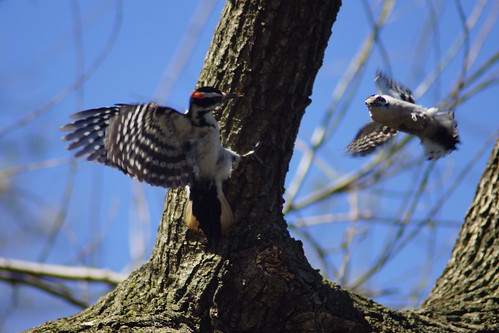confiding Prothonotary
I've never had such a view. The Prothonotaries I've seen before were all 'way up in the treetops.
Anyway, this bird is slightly controversial, because it was just released by the Wild Bird Fund after they rehabbed it. (It had been found in the west 50s.)
So, why is that controversial? Well, for people who are competitive bird-listers, it makes a difference. You're not supposed to count a bird that got where it was with human aid--such as being recently released--according to the governing body for such things, the American Birding Assocaition (ABA). "Recently" is a little vague, and one well-known NYC birder quoted American Birding Association regulations in his report:
I claim that this is an ABA-countable bird. Recording rule 3B says that rehabbed birds are wild birds even though they have been transported. The reason this bird also passes rule 3C (and why last week''s Virginia Rail did not) is that the bird was no longer in its initial movement away from the release point. It had flown over 400 meters to the SE shore of Turtle Pond. It was actively feeding, flying across the pond several times.
There are rules, people, rules. Ahem. Sorry, I don't mean to mock, but this is the kind of thing that keeps me at some distance from the American Birding Association. Let me make it clear that I don't care what birds anyone else counts. I keep lists, but I'm not competitive. For me, if I had seen it on Monday evening, I would have put it in my eBird list, but I'd have a mental reservation about whether I'd "really" seen that species this year. But seeing the bird the day after the release, after it's had a chance to fly out, is perfectly fine to count. Somehow. By my own rules. Anyway, the Prothonotary is my 113th species of the year.
Many warblers are starting to come in. I've seen Black-Throated Green Warblers, some heard singing, and Black-Throated Blues, Common Yellowthroats, and Ovenbirds have been reported in the park, along with lingering Pine Warblers, both Waterthrush species, and a steady stream of Palm, Black-and-White, and Yellow-Rumped Warblers.
butter-butt




























